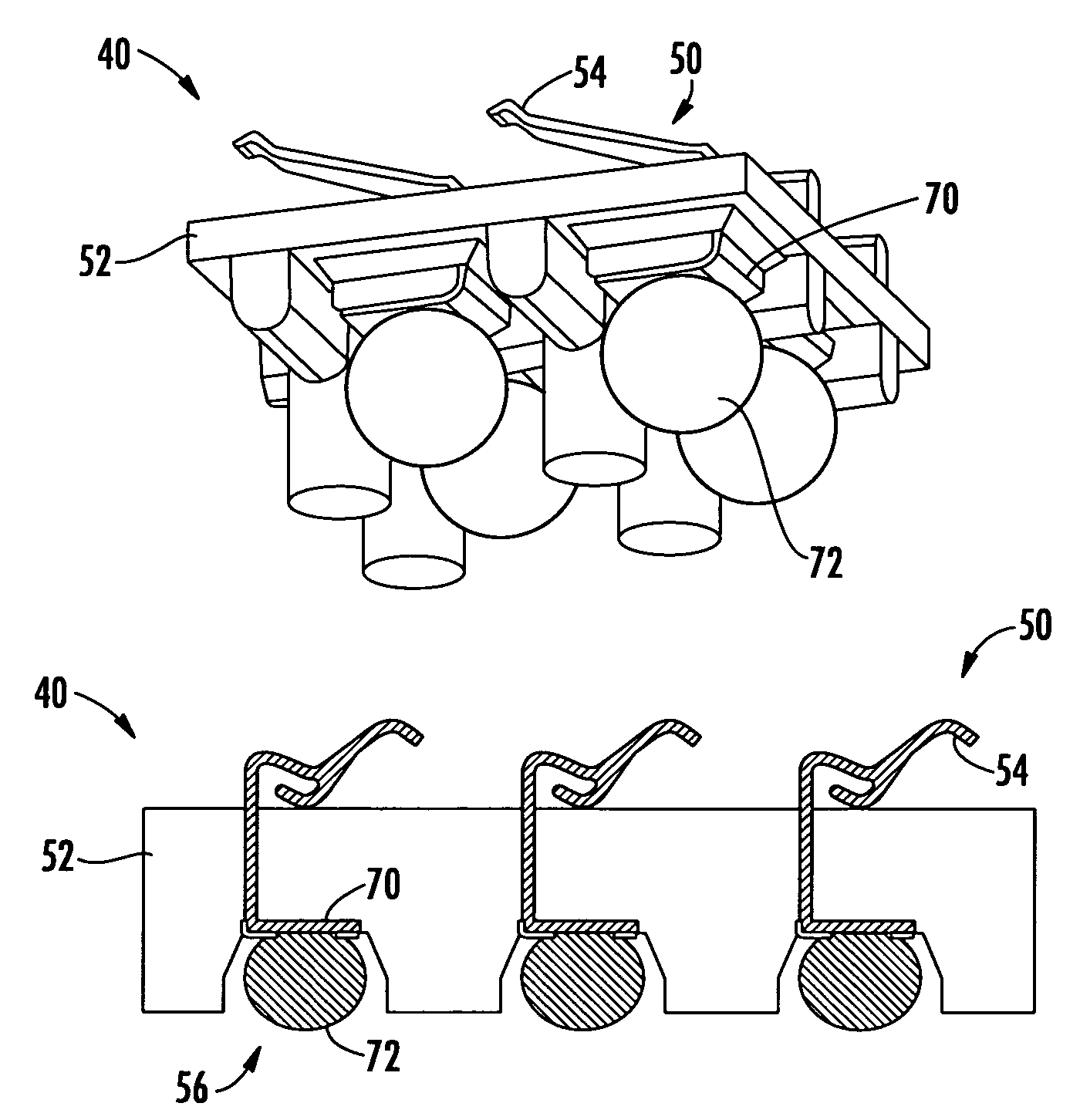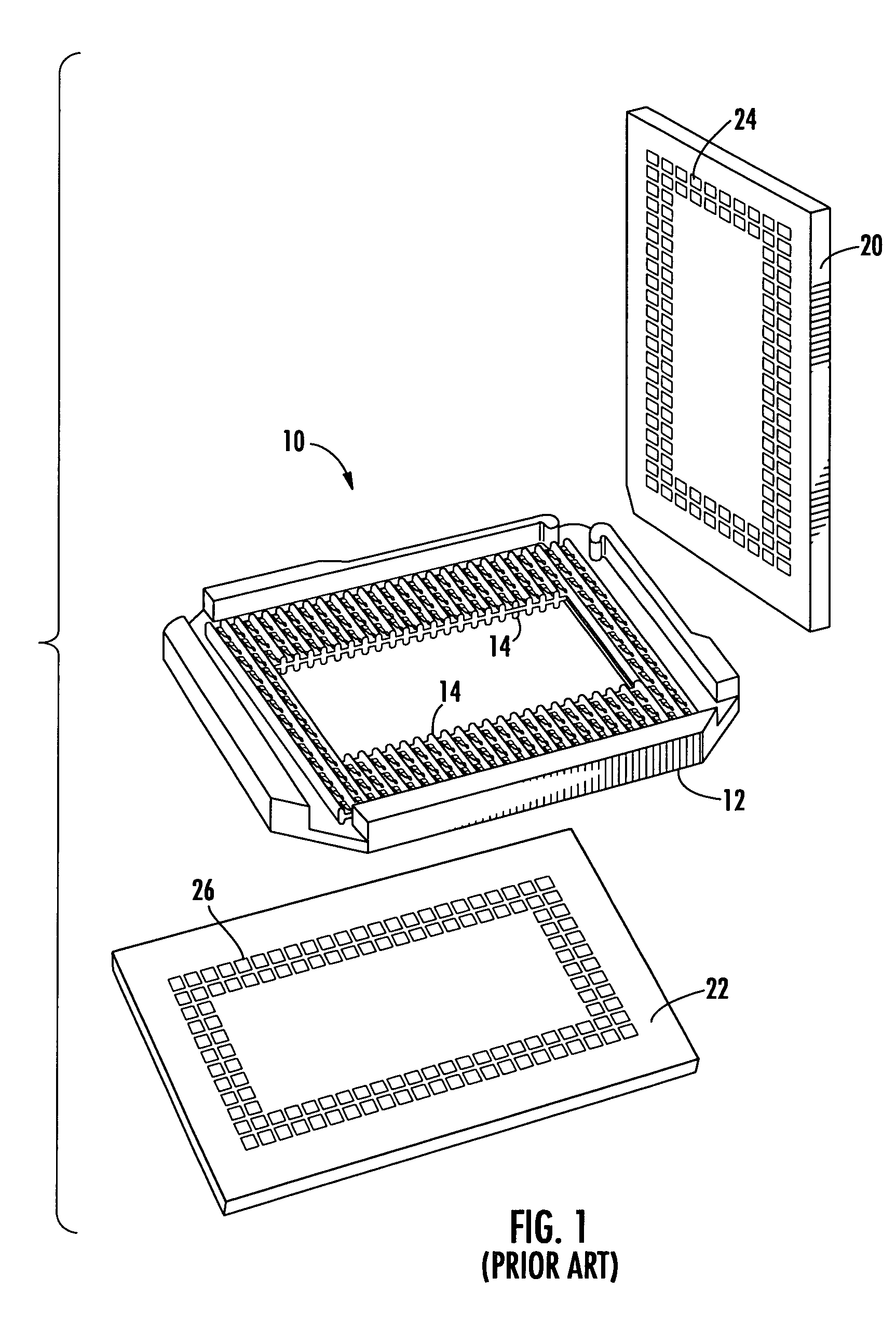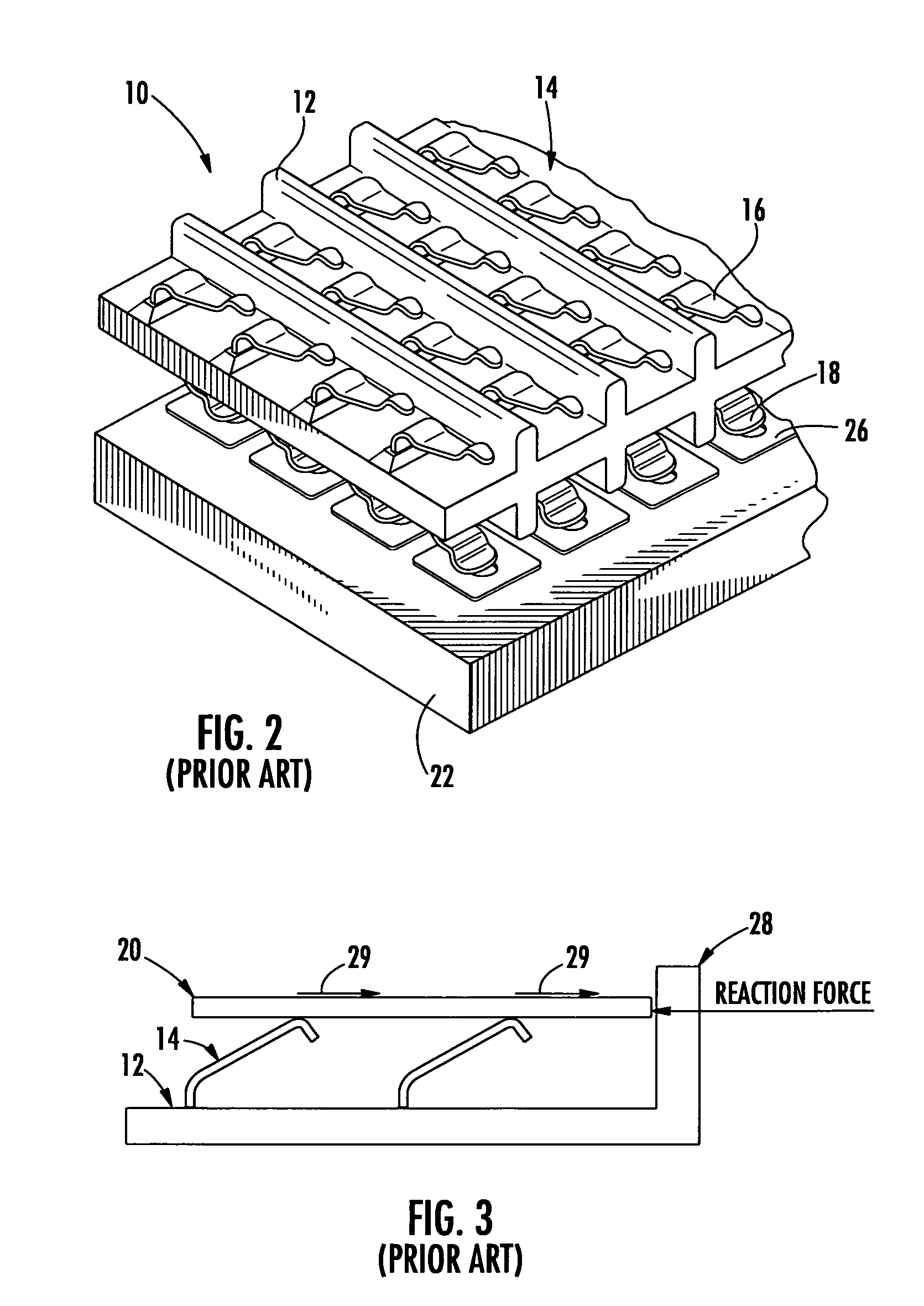Interconnect device with opposingly oriented contacts
a technology of opposing orientation and interconnection, which is applied in the direction of coupling contact members, coupling device connections, multiple conductor connectors, etc., can solve the problems of limiting the alignment of parts, deflection range and cost, and losing the cleaning action of the wipe action
- Summary
- Abstract
- Description
- Claims
- Application Information
AI Technical Summary
Benefits of technology
Problems solved by technology
Method used
Image
Examples
Embodiment Construction
[0017]FIGS. 4–7 depict an interconnect device 40 according to various embodiments of the present invention. The interconnect device 40 may be used to electrically interconnect contacts 42 on a first component 44 to corresponding contacts 46 a second component 48. FIG. 4 is a perspective view of the interconnect device 40 together with the first and second components 44, 48. FIG. 5 is a perspective side view of a portion of the interconnect device 40 with a portion of the second (e.g., bottom) component 48. FIG. 6 is another perspective view of a portion of the interconnect device 40 and FIG. 7 is a top plan view of a portion of the interconnect device 40.
[0018]The contacts 42, 46 may be, for example, lands or pads of various shapes and sizes. For example, as illustrated in FIG. 4, each contact 42, 46 may be a land that is a rectangular shaped flat surface. The plurality of contacts 42, 46 of the first and second components 44, 48, arranged in rows / columns as shown in FIG. 4, may be ...
PUM
 Login to View More
Login to View More Abstract
Description
Claims
Application Information
 Login to View More
Login to View More - R&D
- Intellectual Property
- Life Sciences
- Materials
- Tech Scout
- Unparalleled Data Quality
- Higher Quality Content
- 60% Fewer Hallucinations
Browse by: Latest US Patents, China's latest patents, Technical Efficacy Thesaurus, Application Domain, Technology Topic, Popular Technical Reports.
© 2025 PatSnap. All rights reserved.Legal|Privacy policy|Modern Slavery Act Transparency Statement|Sitemap|About US| Contact US: help@patsnap.com



